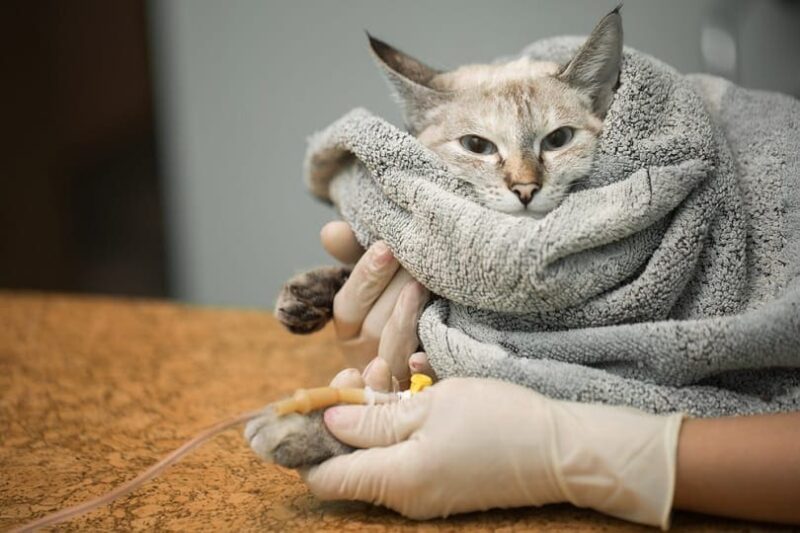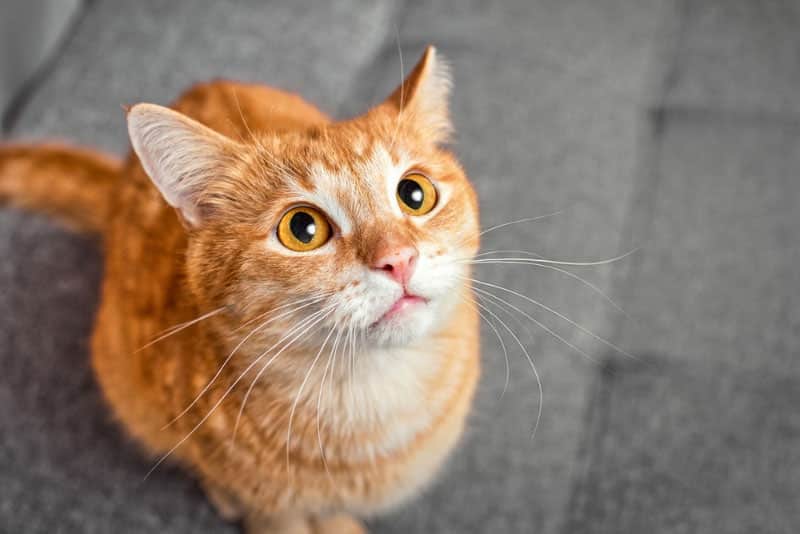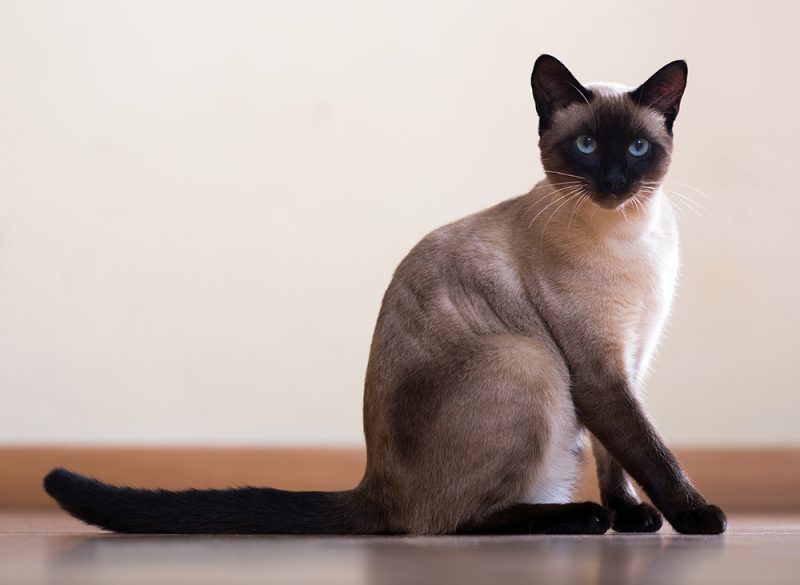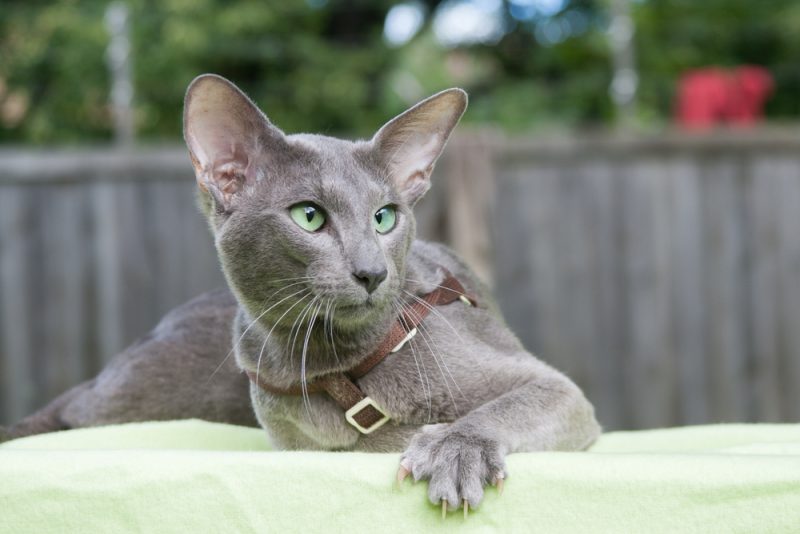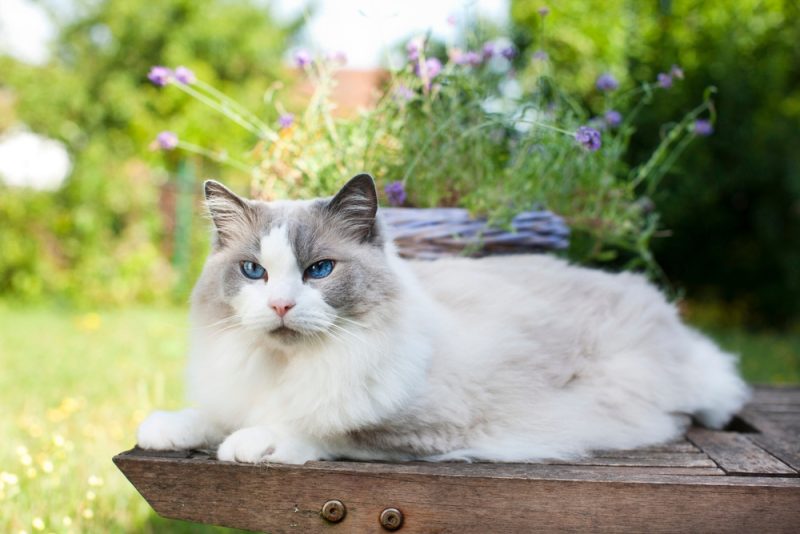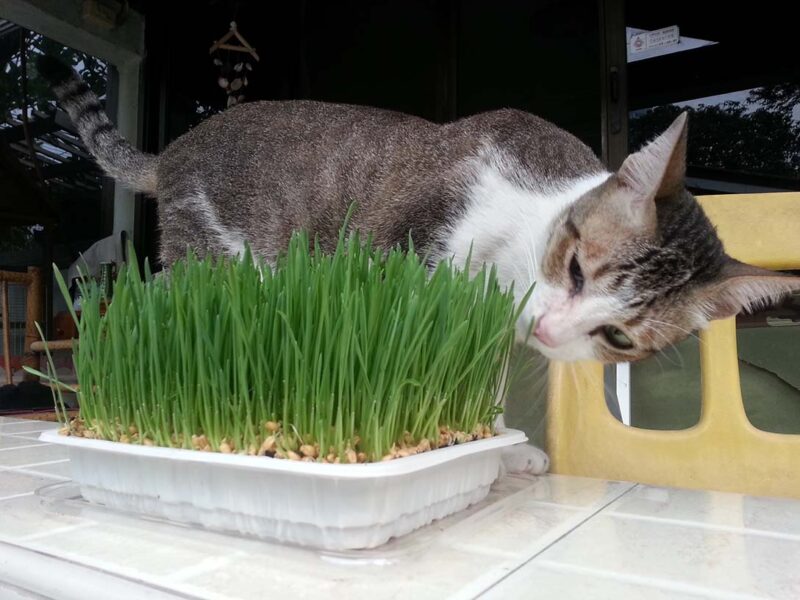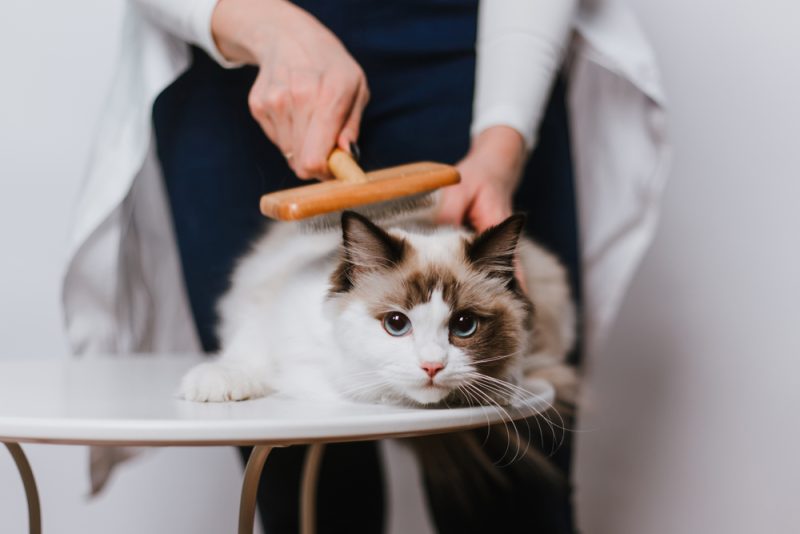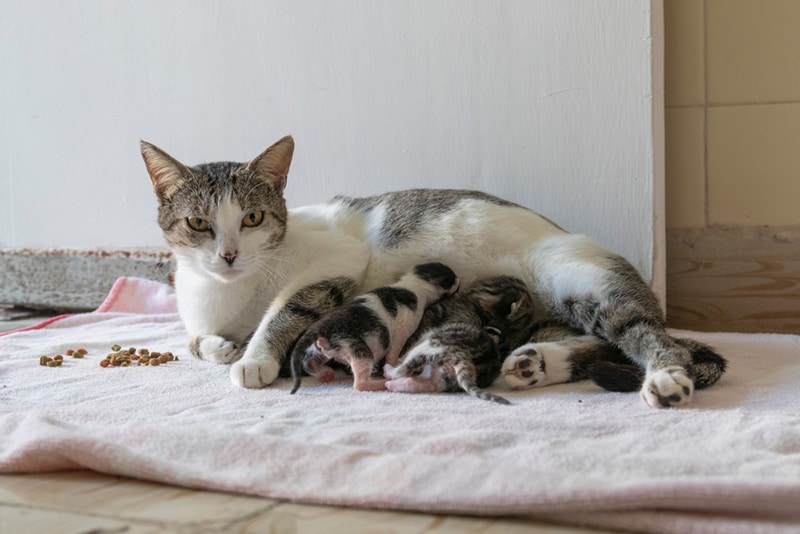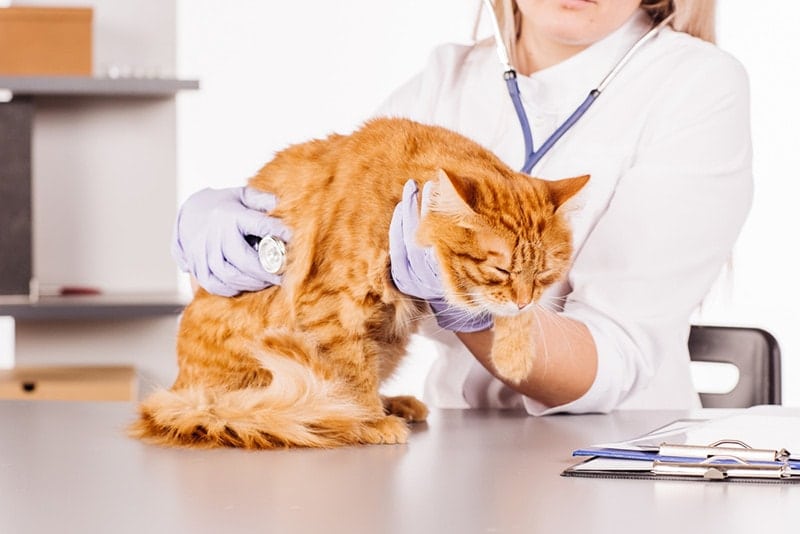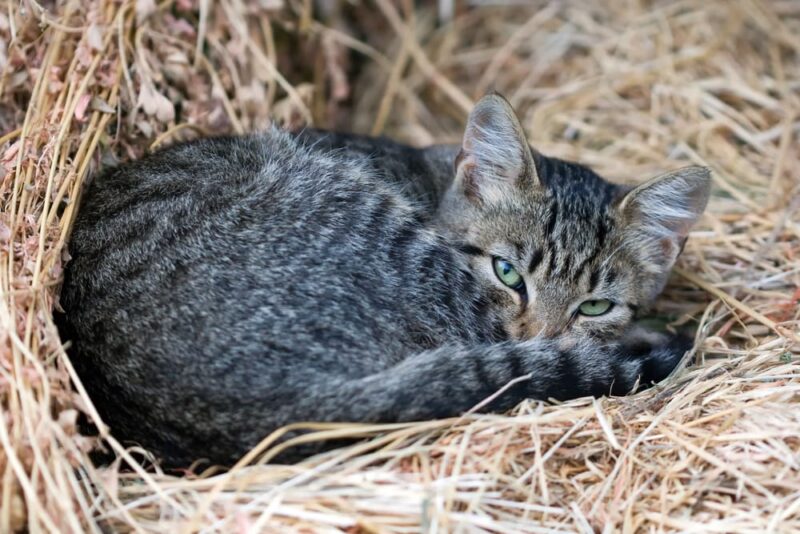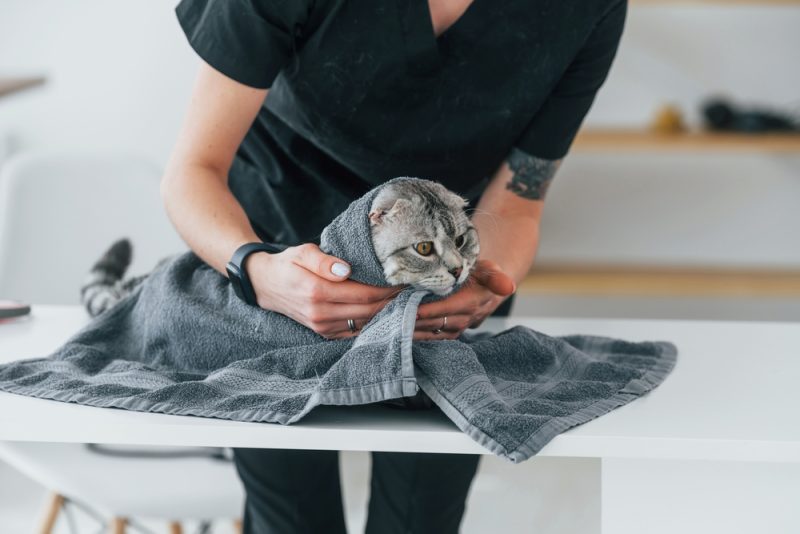In this article
Since cats normally do their business in the same place, it can be easy to tell when something is amiss. Changes to your cat’s stool or urine are usually simple to see in a box full of litter. Noticing these changes can be vital for your cat’s health, since signs like this can sometimes indicate a more serious problem afoot.
So, what should you do if you find blood in your cat’s stool, and equally importantly, what does this mean? Naturally, your veterinarian needs to be included in the conversation and you should call them for their advice right away. But we’re going to lay out the important information that you need to know for how to react when you find blood in your cat’s stool.
For one thing, don’t panic! It could be serious, but if you take the right steps, your cat should make it out of this just fine. Let’s take a look at what bloody stool can mean for your feline and what you should do about it.
 What Is Blood in Cat Stool a Sign Of?
What Is Blood in Cat Stool a Sign Of?
Your cat’s stool can be a great indicator of many health problems.
- Colitis
- Viral, bacterial, or protozoal infections
- Intestinal parasites
- Dietary allergies, intolerance, or sensitivity
- Inflammatory bowel disease
- Colon or rectal polyps
- Foreign body
- Trauma to the rectum
- Anal sac problems
- Clotting disorders
- Constipation
- Cancer
How Should My Cat’s Stool Look?
If you don’t usually pay attention to your cat’s stool, you may have a difficult time determining when something is wrong. Although you may think it would be obvious when blood is in your cat’s stool, it might not be as easy to see as you think.
Before you can tell if there’s blood in your cat’s stool, you need to know what it should look like under normal conditions. When your cat is healthy, their stool should be moist but firm, not wet or runny. Color-wise, it should be dark brown but not black.
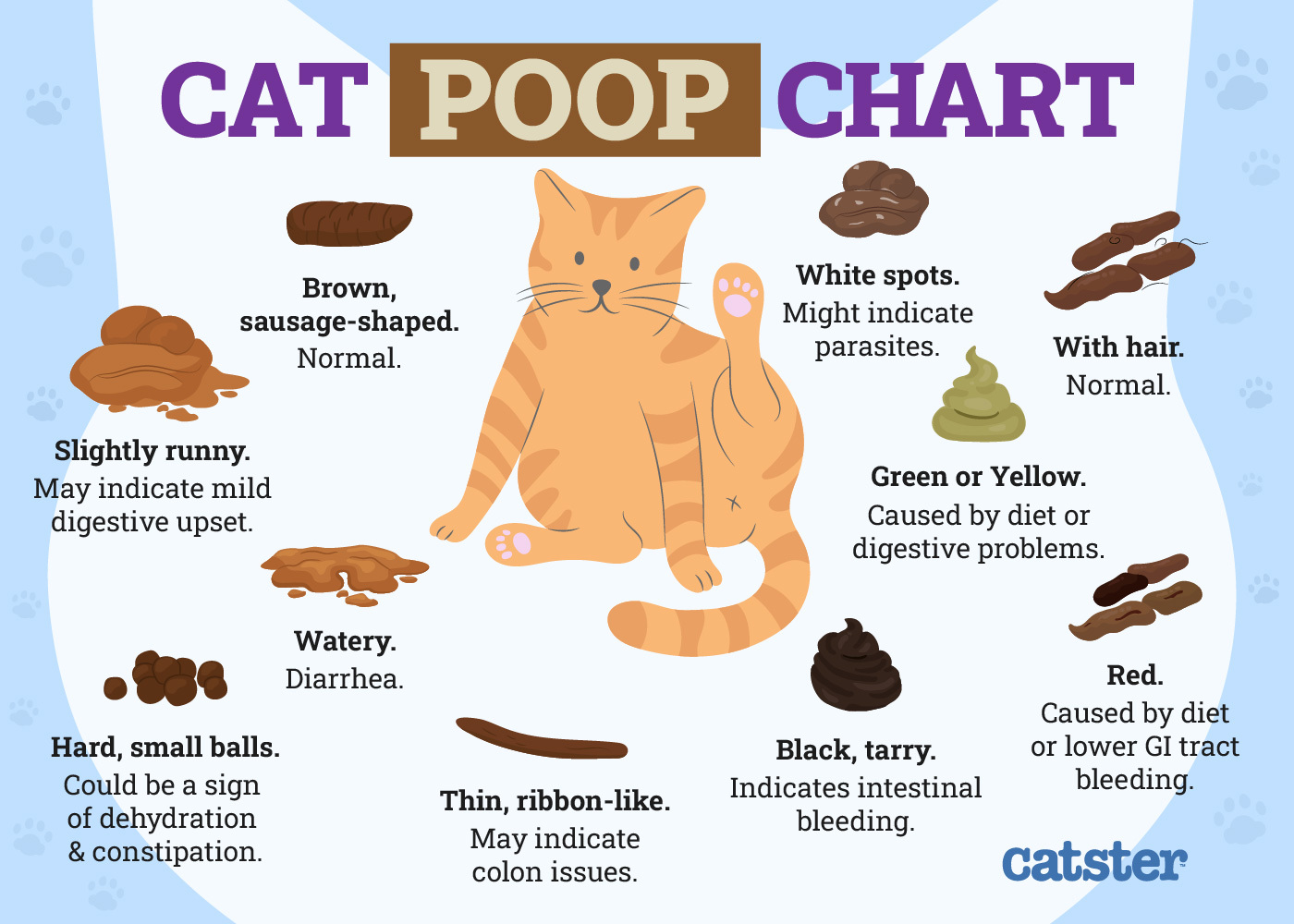

Different Types of Blood in Cat Stool
When examining your cat’s stool for signs of blood, it’s important to note that there are two different types of blood you’re looking for. They appear completely different and are caused by different factors as well. Your vet will need all the information you can offer when diagnosing your cat, so knowing exactly what type of blood you noticed in your cat’s stool can be beneficial.
Hematochezia
This is the easier blood to spot because it’s bright red and sticks out when compared to the rest of the stool. It’s a sign of a problem closer to the anus, in the lower intestinal tract or rectum. Generally, this is the more commonly seen blood in a cat’s stool.
Melena
Melena can be more difficult to notice because it’s very dark and blends in with the rest of the stool. Rather than a bright red color like hematochezia, melena is dark and tarry blood in the stool, making it look black. The blood was partially digested as it made its way through your cat. It might even look like tar. This indicates that the blood is coming from higher up in the digestive tract.
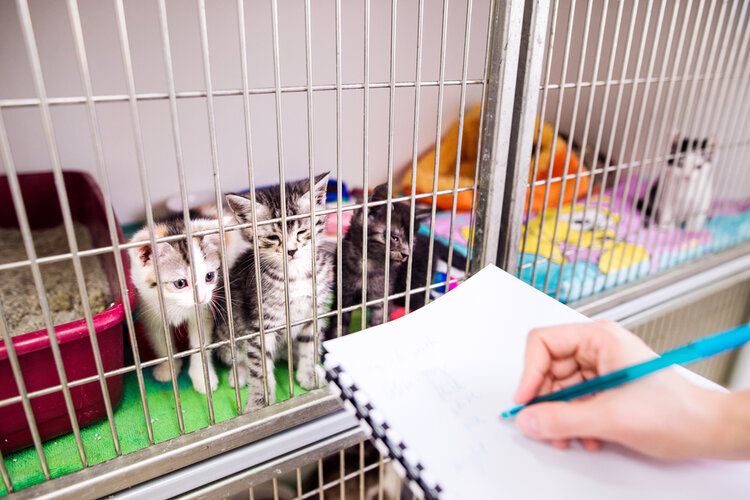
Should You Call the Vet About Blood in Cat Stool?
If you find blood in your cat’s stool, you’ll want to get on the phone with your vet right away. While bloody stool may not be fatal, it can develop into a much more serious condition very quickly since it’s usually a sign of a more dangerous problem already occurring.
But before you call your vet, you’ll want to make sure that you have all the information you need readily available. For instance, you’ll need to be able to accurately describe the bloody stool for your veterinarian, including its coloration. What’s more, you might need to collect a sample to bring to your vet for diagnosis.
Also, note any inconsistencies or oddities in your cat’s recent behavior. Things like rubbing their rear end on the ground or difficulty during bowel movements should be relayed to your vet.
As with most maladies, the earlier the problem is identified, the easier it is to treat. If a problem is left untreated for too long, the signs and issues can exacerbate, and it may be too late by the time the cat receives treatment. Once you get the advice of your vet, you can begin treating the issue and helping to keep your cat comfortable while they heal up.
If you need to speak with a vet but can't get to one, head over to PangoVet. It's an online service where you can talk to a vet online and get the advice you need for your pet — all at an affordable price!

 The 4 Natural Home Remedies for Blood in Cat Stool
The 4 Natural Home Remedies for Blood in Cat Stool
Because blood in cat stool can be a sign of a serious health problem, we don’t recommend beginning any natural home remedies until your vet has evaluated your cat. You should always get any home remedies approved by your vet before administering them.
Once you get approval from your vet, the following four remedies can be additional help in healing your cat’s bloody stool.
1. Feed Your Cat a Bland Diet
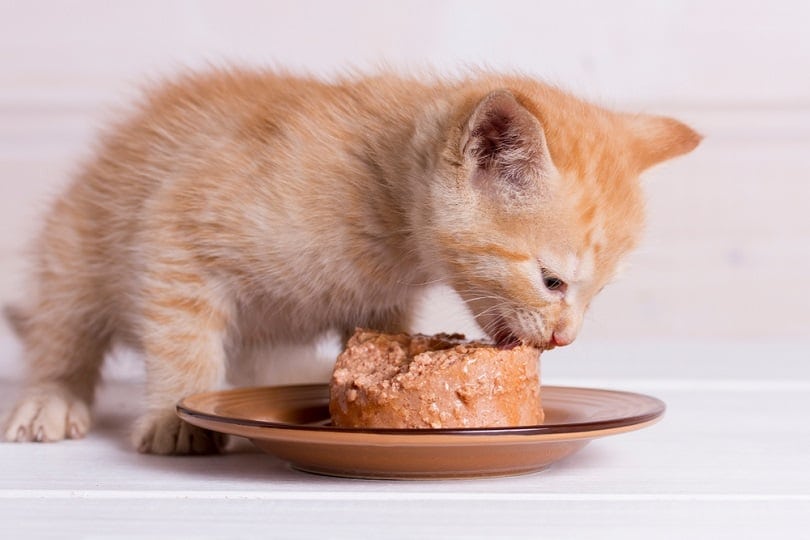
Your cat’s bloody stool could be caused by a variety of factors, but one sure way to minimize all of the possibilities and help remedy the underlying cause is to feed your cat a highly digestible commercial or home-cooked food regimen for several days.
This isn’t something that you’ll want to do for the long term because most of these diets don’t provide your cat with all the nutrients that they need to be healthy, but it will be fine for helping to manage your cat’s signs in the short term.
You can use a single source of plain protein, such as chicken or turkey, to feed to your cat or ideally, a commercial diet formulated to be highly digestible with little residue.
2. Make Changes to the Feeding Schedule
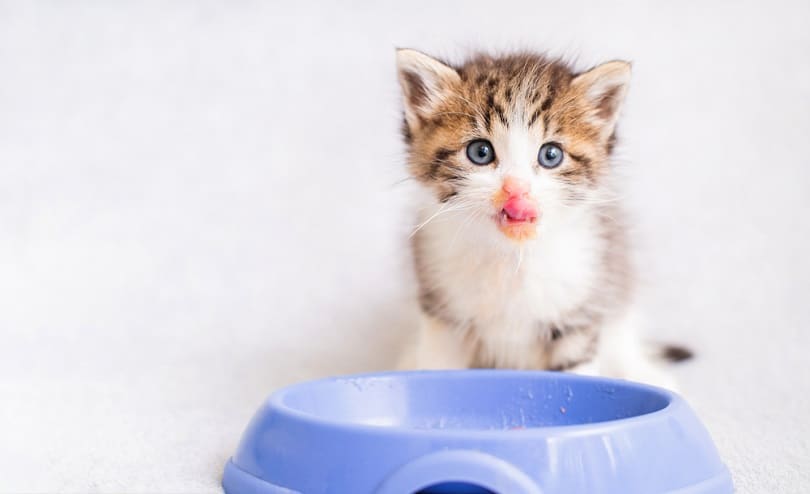
In addition to feeding your cat a bland diet, you’ll need to make adjustments to their food regimen. Your vet should be able to point you in the right direction.
Following their guidance, feed your cat small meals frequently throughout the day. Make sure to do this over several days until your cat’s poop looks normal again. Be sure to follow your vet’s directions closely to help treat your cat’s health concerns and prevent bloody stool from occurring in the future.
3. Conduct Fluid Therapy
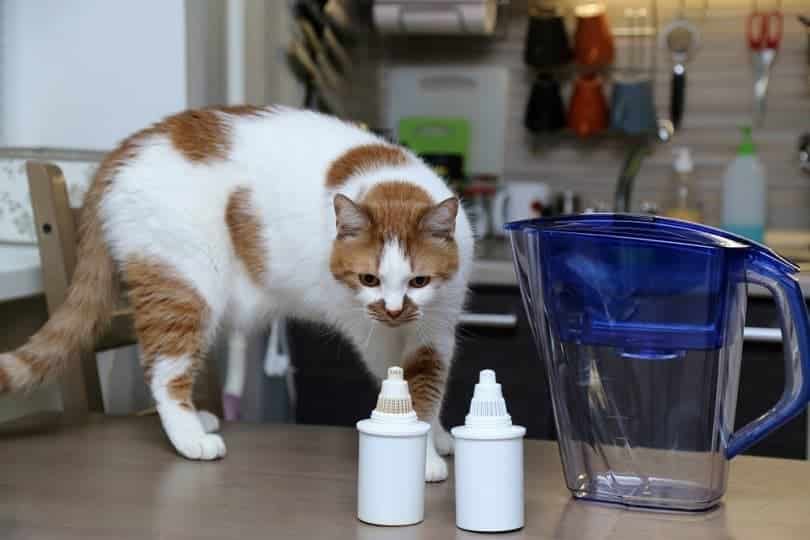
If your cat has bloody stool, it might be accompanied by other side effects, such as diarrhea or vomiting, that can rapidly cause dehydration. This will make your cat feel unwell, affecting their appetite and worsening their digestive health. Since dehydration is a serious concern for cats experiencing bloody stool, fluid therapy is sometimes used to help hydrate cats with this issue. Your vet will give you advice on this.
When fluid therapy is done at home, it is given through subcutaneous fluid injection. You’ll be using a catheter and a fluid bag to administer the supplemental fluid under your cat’s skin. This is especially effective because cats don’t have a strong thirst drive, so they often won’t drink enough on their own.
4. Try Probiotics
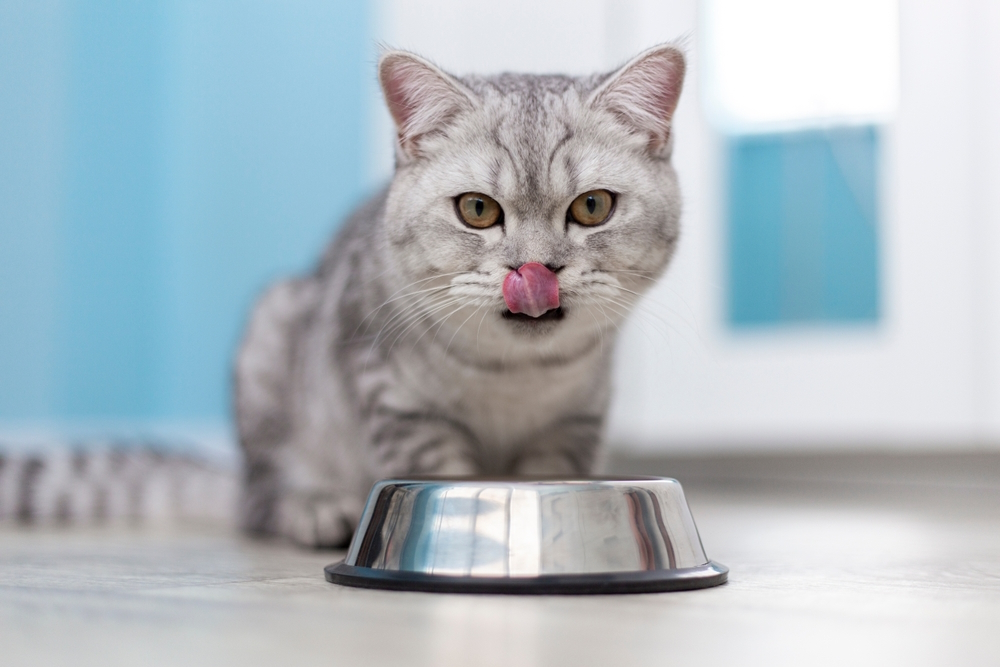
Probiotics can be a strategy for dealing with bloody stool, but it’s best to speak to your vet about the best ones for your cat. These are beneficial live microorganisms that you can feed to your cat to improve their gut health. Cats, dogs, and humans have different types and numbers of bacteria in their respective digestive tracts, so your cat must only receive those specifically made for them.
 Preventing Bloody Cat Poop
Preventing Bloody Cat Poop
Although bloody stool requires a specific treatment depending on the underlying cause, there are also a few measures that you can take to help your cat have a healthy digestive system and minimize their chances of suffering from the problem. But how can you keep your cat’s digestive tract in good shape? Here are a few guidelines to help you.
Avoid Problematic Foods for Felines
Sometimes, bloody stool is caused by non-suitable foods. While cats can eat a wide variety of foods, there are some things that they should never eat. For instance, dairy products can cause digestive issues that can lead to bloody stool if they progress far enough.
Likewise, foods that cause a food allergy for your cat also need to be removed from the diet.
Make Dietary Changes Slowly
Throughout your cat’s life, you will have to make changes to their diet on several occasions. But no matter what changes you’re making to your cat’s food regimen, you need to make them slowly. Drastic changes in your cat’s diet can cause unpleasant and unwanted side effects, including blood in their stool.
When making dietary changes for your cat, use small amounts at a time, gradually increasing the intake of the new food while phasing out the intake of the old food. This will enable your cat’s digestive system to get accustomed to the new diet.
Reduce Your Cat’s Stress Levels
Similar to humans, a cat’s stress levels can have adverse effects on their health. A stressed-out cat can be susceptible to a wide array of health concerns. Do your best to eliminate known stressors in your cat’s life. While some changes aren’t always avoidable, doing your best to reduce your cat’s stress can be very helpful in eliminating the underlying causes of bloody stool.
 Conclusion
Conclusion
Your cat’s feces can be a very strong indicator of their overall health. If you discover blood in your cat’s stool, it can be a sign of a much bigger problem higher up the chain. This could be caused by parasites, bacteria, inflammation, anal sac problems, or a plethora of other reasons.
Take careful note of anything you notice in your cat’s bloody stool and then call your vet. They can give you more specific instructions, including any dietary changes that need to be made for your cat’s health. After discussing it with your vet, you can try giving your cat a bland diet or making adjustments to their feeding times to help get them back to full health.
Remember, prevention is the best medicine. Make dietary changes slowly, keep your cat well hydrated, avoid feeding them problem foods like dairy, help keep their stress levels low, and otherwise do your best to minimize the chances of problems like bloody stool in the future.
You might also like:
- Feliway Pheromone Spray Review: Recalls, Pros & Cons
- 10 Natural Home Remedies to Stop a Cat from Scratching & Clawing
Featured Image Credit: Studio Peace, Shutterstock
